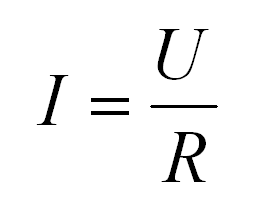Ohm’s Law
This law takes into account the key quantitative characteristics of an electric circuit:
- Voltage U volts (V) The pressure that starts the flow of electrons.
- Current strength I amperes (A) The speed of the flow of electrons.
- Resistance R Ω (Ω) Blocks the flow of electrons Ω = Greek letter omega.
Ohm’s Law
А law stating that electric current is proportional to voltage and inversely proportional to resistance.
To describe an electric circuit that does not contain EMF, you can use Ohm’s law for a section of the circuit. This is the simplest form of recording:
- I is current measured in Amps,
- U is voltage in Volts,
- R is resistance in Ohms.
WARNING! This formula is valid for direct current.
Ohm’s law for AC
In AC circuits, ohm’s law becomes:
U = I ∙ Z
where:
- V= voltage
- I = current
- Z (impedance)
Impedance is denoted by the letter Z, it includes active load resistance R and reactive resistance X.
XL and XC are components of reactive resistance. Depends directly on what active and reactive elements are present in the circuit and how they are connected.
The inductive resistance acting on the alternating current is due to the inductance of the electric circuit:

Capacitive resistance created by a capacitor:

Parameter ω, which is the cyclic frequency of the network. Its value is determined by the formula ω = 2πf, where f is the frequency of this network (Hz).

